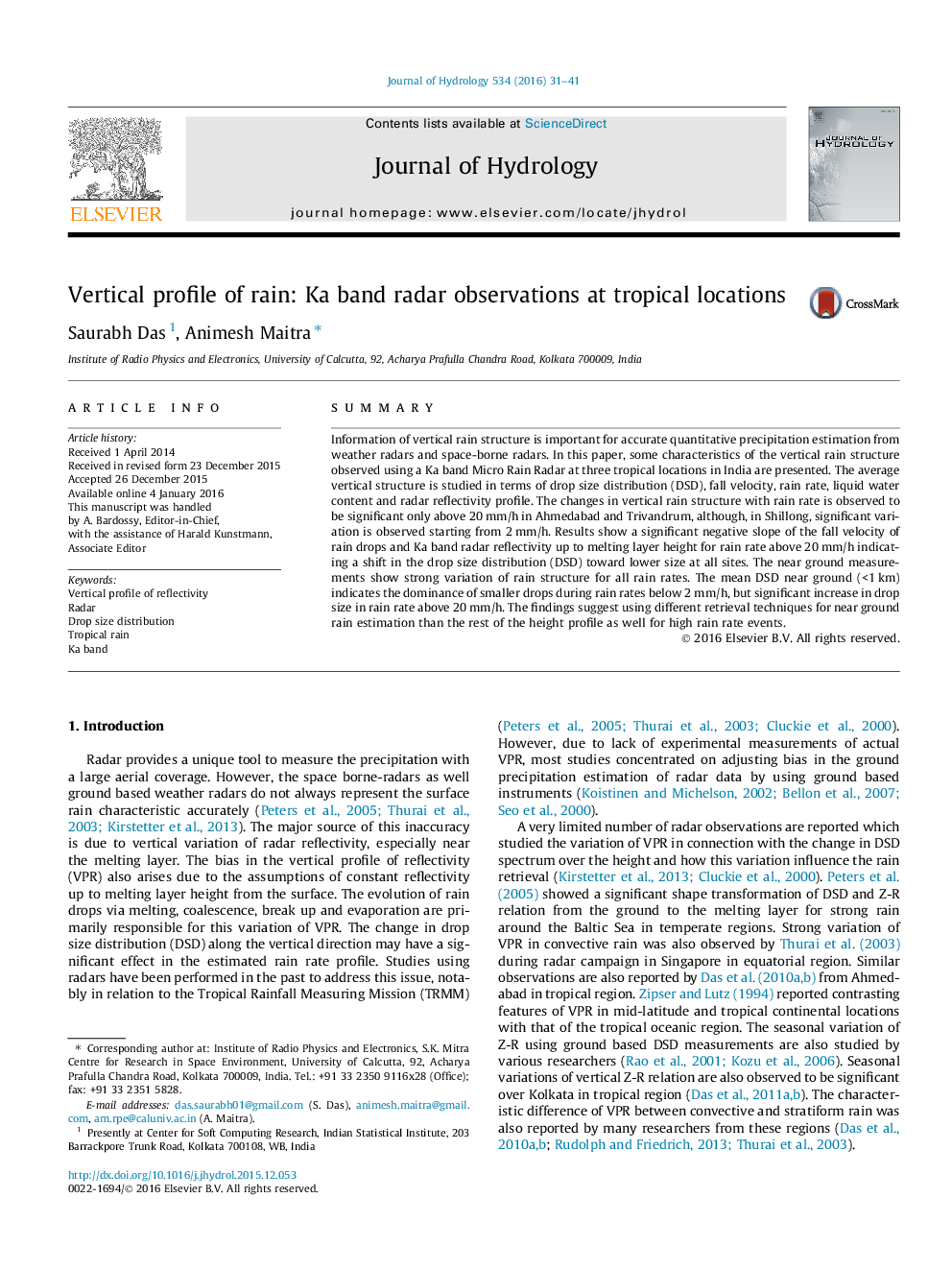| Article ID | Journal | Published Year | Pages | File Type |
|---|---|---|---|---|
| 6410298 | Journal of Hydrology | 2016 | 11 Pages |
â¢Ka band radar observations at three tropical locations are studied.â¢Large negative gradient is observed in VPR above 20 mm/h rain rate.â¢Rain drop evolution mechanism is also studied.â¢Significant variations of radar VPR is observed at lower 2 km height.â¢Results will be helpful in interpretation of GPM data over tropic.
SummaryInformation of vertical rain structure is important for accurate quantitative precipitation estimation from weather radars and space-borne radars. In this paper, some characteristics of the vertical rain structure observed using a Ka band Micro Rain Radar at three tropical locations in India are presented. The average vertical structure is studied in terms of drop size distribution (DSD), fall velocity, rain rate, liquid water content and radar reflectivity profile. The changes in vertical rain structure with rain rate is observed to be significant only above 20Â mm/h in Ahmedabad and Trivandrum, although, in Shillong, significant variation is observed starting from 2Â mm/h. Results show a significant negative slope of the fall velocity of rain drops and Ka band radar reflectivity up to melting layer height for rain rate above 20Â mm/h indicating a shift in the drop size distribution (DSD) toward lower size at all sites. The near ground measurements show strong variation of rain structure for all rain rates. The mean DSD near ground (<1Â km) indicates the dominance of smaller drops during rain rates below 2Â mm/h, but significant increase in drop size in rain rate above 20Â mm/h. The findings suggest using different retrieval techniques for near ground rain estimation than the rest of the height profile as well for high rain rate events.
